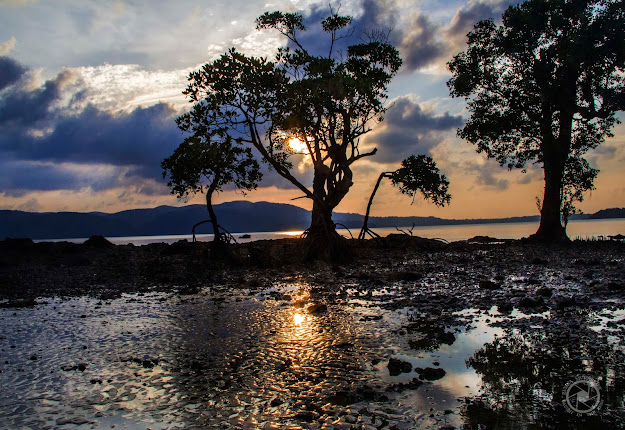The Achilles' heel of West Bengal: The forests of Sundarbans
Photo courtesy: Rumna Mukherjee
In the aftermath of
decades of industrialization, deforestation, and urbanization, the time is fast
approaching when our repercussions end up pushing the planet into the throes of death; reminding
us again of this very astute saying by the infamous Cree Indians – “Only
when the last tree has died and the last river been poisoned and the last fish
been caught will we realize we cannot eat money.”
With the advancement in ecological sciences and sustainable
management, the past decade has seen a trending shift of change in various
policies of governance across the globe focussing solely on implementing a greener way of working as well as truncating their carbon footprint. Various
policies to implement efficient management of protected areas and species have
been incorporated across the globe as these natural resources and environmental
factors are now being viewed as assets of importance in relation to the
socio-economic and political status quo. With the conceptualization of new techniques in the field of Political
Ecology, Ecosystem Services, and community management in conservation are key players encompassing all aspects of any
particular ecosystem epitomizing its key features and effectively delivering a kaleidoscope of strategies and policies for conservation, preservation and
valuation.
Various interdisciplinary fields such as carbon financing, political ecology, climate studies, and ecological conservation aid us with tools to scientifically carry out research about various issues from a political, socio-economical, and anthropogenic aspect which are all connecting links to the environment and ecosystem. It revs up the study of an otherwise moribund and speculative subject of ecosystem management and environmental activism. A case study succinctly illustrating the idea can be seen in one of India’s eminent UNESCO World Heritage sites, the reserved forests of Sundarbans. A cluster of unique ecoregions such as the mangroves with endemic biodiversity like the incredible Bengal tigers is what encompasses the picturesque image of the Sundarbans. Being a reservoir of natural resources, this ecosystem directly supports the livelihood of 4.5 million people. Although, with a subsequent increase in population various inimical changes such as clearing out of forests for farming, habitat overlap, and conflict-ridden co-existence of the people with megafauna, decimation, and destruction by natural calamities such as floods or cyclones, and unstable income sources from fishing and honey collection have cropped up, ultimately resulting in a continued state of despondency are just some of the focal issues. Furthermore, the recent cyclone Amphan has added to the litany of adversities, leaving a trail of climate refugees in its wake with a communal feeling of apathy and despair towards life.
The echoes of a ruined city, once built by Chand Sadagar, was
a safe haven for criminals and social rejects to take refuge in during the rule
of Emperor Akbar. These saltwater marshes were frequented by dacoits,
Portuguese pirates and salt smugglers, tarnishing the essence of an area
otherwise rich in biodiversity, location, and unique ecosystem. The past of this the land has perhaps resulted in conceiving a sense of alienation among the people
currently residing there and has fed into the prejudices of the local governing
bodies who ostracize the already marginalized people living shambolic lives in
these fringes. This
drift in social status in addition to existing struggles has resulted in an economically backward and socially unstable lifestyle
for the people living in the communities across the Sundarbans, with their primary
earnings from fishing, honey collection, and selling basic forest produce, which
can barely pass for a stable source of income. However, these people face far
more in terms of adversities than a meager profit margin; issues of human-wildlife
conflict, poor standard of living, lack of local decision making barely scratch
the surface of the real picture.
Identifying the existing socio-political red herrings in community practices and beliefs coupled with consistent efforts towards understanding the labyrinthine dynamics of eco-governmentality, and implementations of good practices with efficacious bureaucratic policies can make it possible to square the circle, by coming up with cogent and conclusive action plans to a more sustainable rehabilitation of the communities and mangrove conservation.
- Swagatama Mukherjee



Sunderban is being neglected. It is high time we should protect it to protect environment. Very good research work.
ReplyDeletelovely article. Very well written
ReplyDeleteLovely work after thorough research.
ReplyDelete